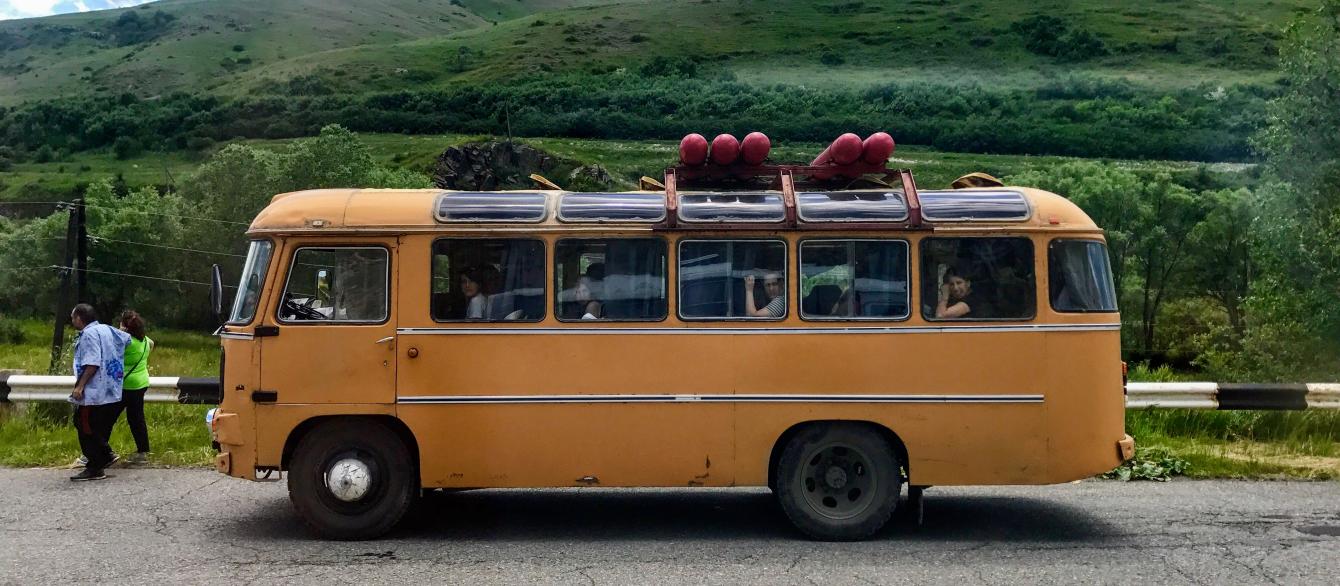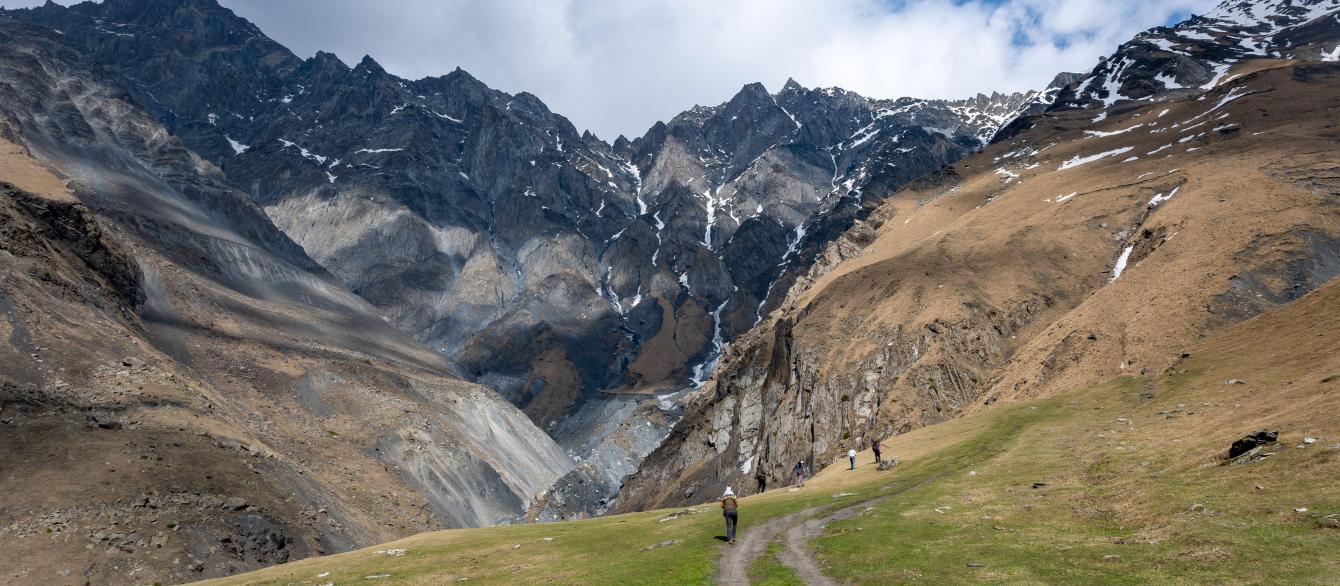This article was first published by Civil.ge and is reprinted with permission.
Young people have often championed progressive changes all over the world, whether by fighting economic inequality or rebelling against conservative belief systems. But in Georgia, which broke away from the Soviet Union in 1991, things have been much more complicated.
Georgia’s regained independence from the Soviet Union was followed by years of deep economic and political crisis. Economic inequality and social insecurity began to plague the majority of Georgians, and left-wing intellectuals continually pointed to the damage done by Georgia’s post-Soviet “neoliberal transition.” And yet, activism that would offer a progressive response to these challenges was slow to emerge.
“There is still a lingering stigma associated with socialism due to the Soviet experience,” Mariam Alikhanishvili, an organizer with the Young Socialists of Georgia, an activist group, told me.
Attitudes have begun to change over the past 10-15 years, yet Georgia has yet to see a strong and more consolidated left-wing wave. Now, inspired by increased access to information, a radically changing political landscape, and current socioeconomic challenges, some Georgian Gen Z’ers are looking to the left of the political spectrum for broader solutions that could dramatically transform Georgian politics.
New Challenges, New Solutions?
The roots of contemporary Georgian left-wing movements could be traced back to the not-so-distant past.
One of the pioneers of contemporary Georgian left organizing was Laboratory 1918, a student organization that emerged at Tbilisi State University in 2011 and symbolically linked itself to Georgia’s first republican, democratic, and socialist government of 1918. The group was founded in response to the problems endemic to Georgia’s higher education system, including the undue penetration of the security services in their university, but Laboratory 1918 actively pushed a left agenda beyond the academic sphere by focusing on the social struggles and inequalities that were gripping the country at the time.
The group’s activism gradually inspired other left-wing activist networks, with some championing labor rights (such as Solidarity Network), others advancing feminist causes (such as Women’s Gaze), and more organizations broadening their focus to include social justice issues. In 2016, the walls of the university were again shaken by leftist noise with the emergence of another student movement, Auditorium 115. Like its precursor, the Auditorium 115 was brought to life by the need to respond to enduring problems of academic freedom and education. But the group broadened the scope of its activism beyond academic confines to include a broader range of issues, from labor rights to environmental protection.
“Today, our country needs new ways of development. The current situation is strictly unacceptable for the majority of our citizens. Only the business elites and intellectuals associated with them are opposing the positive changes,” the group said in its lengthy 2018 manifesto dedicated to the 100th anniversary of the university. “Now it is important to organize against this brutal order, which caused the suffering of hundreds and thousands of our citizens.”
While all of these groups remained active for years, they were not enough to create a stable and strong left-wing movement. As the generation of students changed, both Laboratory 1918 and Auditorium 115 eventually disappeared from the scene, while internal divisions among leftist groups added to the overall disorientation.
Since 2021, Georgia has seen another resurgence of left-wing organizing, a period also marked by the country’s slow democratic backsliding. Various social problems, including pension loan schemes, forced evictions, and persistent challenges related to poor working conditions, prompted a new wave of left-wing activism. One of the most pivotal moments in the resurgence was the opposition to the proposed construction of the controversial Namakhvani hydroelectric power plant in 2021. As various progressive groups united in solidarity with a grassroots anti-HPP movement, the construction of the HPP became a turning point for making clear connections between socio-economic and environmental issues.
When Tbilisi State University saw yet another wave of student protests in 2022, the new group, May Student Movement, identified itself with left-wing ideals more openly and boldly from the start, including by advocating for adequate housing and improved social conditions for students.
Fighting Stigma
Did the new wave of mobilization signal that younger Georgians were finally breaking free of Soviet-influenced stigma? Not quite yet.
“I have encountered numerous instances where I had to clarify that contemporary left ideals — such as social justice, economic equality, and environmental sustainability — are fundamentally different from the authoritarian practices of the Soviet Union,” Mariam Alikhanishvili of Young Socialists of Georgia told me, pointing at a challenging task in “dispelling deeply entrenched misconceptions.”
Georgia and its younger citizens are still struggling to come to terms with its violent Soviet — and therefore socialist — legacy. A 2023 poll found that 63% of young Georgians believe the end of the Soviet Union was a good thing. The same poll showed, however, that a majority of those who viewed the Soviet Union negatively also thought that the “dark” 1990s that followed “brought rather bad things.”
Now, young Georgian lefts are rearticulating for themselves — and for Georgia more broadly — what it means to be young and socialist in a post-socialist society. Activists have mobilized efforts to combat these prevailing beliefs by educating the public. The work of the Young Socialists of Georgia, for example, focuses on the need to mark “the distinctions between our vision of socialism and the authoritarianism of the past.” Their efforts seem to have borne some fruit.
“There is a growing awareness and understanding that socialism, in its modern context, does not equate to the authoritarianism and lack of freedoms experienced during the Soviet era,” Alikhanishvili contends.
Adding to the challenge, younger Georgians still struggle with issues of political identification. The 2023 study also found that young Georgians “do not fully understand the concepts of left-wing and right-wing political beliefs. About 12% of Georgian youth identify as left, but many struggle to understand what it means to be left-wing. Leftist policies such as a living wage, anti-privatization laws, and free health care are often mistakenly associated with the political right among Georgian youth.
The political landscape is also changing, albeit very slowly. While there have been cases in recent years of political parties adopting social agendas pushed by left-wing activist groups, there is still no political force around which left-wing Georgians can rally – and most young Georgians agree that their interests are not represented at all in Georgian national politics. As the crisis continues, some are looking to the younger generations for hope.
“The younger generation will play a pivotal role in shaping the future of left-wing politics in Georgia,” Alikhanishvili said, hopeful that “digital fluency and ability to mobilize quickly through social media platforms” give younger progressives a distinct advantage in rallying support around their causes. “Gen Z activists are already demonstrating their commitment to progressive causes through their involvement in protests, grassroots organizing, and advocacy work.”
Conquering New Venues
One way for young left-wing activists to do this could also be to engage in broader struggles without compromising their vision. The current broad protest movement against Georgia’s foreign agents law could embody this spirit. Various left-wing activist groups have been able to participate in the massive, youth-led, decentralized protests while bringing progressive ideas to the resistance. This development marked a kind of break with earlier tendencies of the Left to distance itself from liberal politics.
“The protest has to expand in its content and absorb progressive, class-based demands,” Giorgi Kartvelishvili, a member of Khma, told International Standpoint. “Merging class and national interests is the only way to move forward.”
During the protests, the May Students Movement also published a statement urging students to organize strikes, called Bidzina Ivanishvili, the billionaire founder of Georgia’s ruling party, and his circle “robbers, exploiters, and parasites,” and described the foreign agents law an “anti-people law.”
The expansion of current progressive activism, however, may not be limited to current political protests. Georgian left-wings seem to be increasingly accepting an intersectional approach to organizing, even though the extent of intersectionality has repeatedly led to divisions among local activist groups. The movement against the construction of Namakhvani HPP was one of the key events that opened the doors to a more intersectional approach, including by showing that class was no longer the only issue around which movements could rally. Issues of the environment, sexuality, and gender, among others, began to be seen in the broader context of what had become important to young Georgians.
“If you’re a feminist, you cannot be silent when there are women in villages experiencing ecological disasters because some company is mining manganese or iron from their land, and their houses are collapsing,” Anano Sanikidze, an activist from Kutaisi, pointed out. “And if you’re queer, then there’s a struggle that you share with unemployed poor. That struggle transcends sexuality. It’s a struggle of class.”
It remains to be seen how these developments penetrate Georgia’s noisy and increasingly polarized political scene. More often than not, left-wing activism seems to take place outside of politics, and left-wing ideas tend to proliferate in academic circles, reading groups, and cultural life.
“Intellectual leftism,” as Sanikidze said, has become “kind of mainstream.”
“The emotions are definitely there, especially in young people,” she told me.






